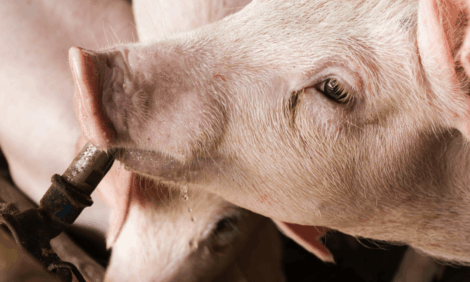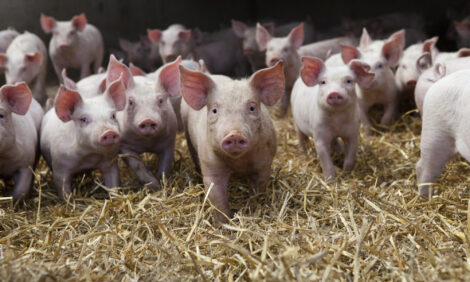



Take Control of Ileitis with Denagard
One of the most prevalent swine diseases in the US, ileitis infects roughly 75 per cent of large herds and nearly all US pigs have been exposed to Lawsonia intracellularis, the bacteria that causes ileitis, according to Novartis Animal Health.Key Points
- Ileitis can be misdiagnosed, as the clinical signs are similar to other enteric diseases
- A proper diagnosis will lead to the best ileitis control program
- Left untreated, ileitis severely reduces pig performance and profitability
- As part of an intermittent antibiotic therapy program, antibiotics like Denagard (tiamulin) deliver the most effective ileitis control
 |
Because ileitis causes diarrhoea, its signs are often confused with the signs of other enteric diseases such as swine dysentery and salmonellosis. Each disease requires different diagnostic procedures and control methods, so making an exhaustive diagnosis is the first step to a successful ileitis treatment programme.
Protect pigs from ileitis by:
- Recognizing the signs of ileitis
- Confirming the diagnosis of ileitis through exhaustive diagnostics
- Understanding the economic consequences of the ileitis
- Developing an effective treatment program based on the specific needs of your herd
Ileitis: Characteristics and Signs
Ileitis affects the ileum, the last part of the small intestine where most nutrients from feed are absorbed. Pigs can develop a lifelong immunity to ileitis if infected by the ileitis-causing bacteria Lawsonia intracellularis. However, without treatment, infected pigs will show clinical signs, perform poorly and may even die. The disease manifests in the pig in one of three ways – acute, chronic or subclinical.
Acute ileitis
- Can result in bloody diarrhoea and sudden death
- 15 to 20 per cent mortality from the acute form
Chronic/clinical ileitis
- Diarrhoea
- Poor feed efficiency
- Poor growth rate resulting in lighter weights compared to healthy pigs
Subclinical ileitis
- No diarrhoea
- Variations in growth and weight gain compared to healthy pigs
Diagnostic testing of swine faeces is necessary to determine which disease (ileitis, salmonellosis, swine dysentery or other Brachyspira bacteria) is causing the symptoms. A confirmation of ileitis infection in the herd helps veterinarians and producers use the right medication at the right time for better overall control.
The Economics of Ileitis Control
Estimates suggest that ileitis costs the US pig industry $1.7 billion annually due to mortality, poor growth rates and reduced feed efficiency. The costs of ileitis within an individual operation will vary, depending on the amount of exposure and when the pigs are exposed in a growing herd, although the cost of lost productivity from ileitis can be as much as $5 per animal.1
Intermittent Antibiotic Therapy Programme
The key to controlling ileitis is to expose pigs to Lawsonia intracellularis and then treat them with Denagard before clinical disease occurs. This natural exposure to the disease-causing bacteria before treatment allows pigs to develop lifelong active immunity to ileitis, giving them ongoing protection once antibiotics are discontinued.

Ileitis Management
Antibiotics like Denagard are important tools in controlling ileitis. Because they treat the disease of interest as well as other diseases, antibiotics provide convenient, broad-spectrum disease control.
Denagard Brings Key Advantages to Ileitis Control Programmes
- Low approved dose of 35 grams per ton means more control from less medication
- Short approved treatment duration of only 10 days brings faster results
- Least expensive approved feed medication option due to shorter treatment duration and lower dose
Caution: Do not feed Denagard undiluted. Do not use in feeds for animals other than swine.
Intermittent antibiotic therapy works best with Denagard administered for a short period of time prior to or around an anticipated outbreak.
Contra–indications: Swine being treated with Denagard (tiamulin) should not have access to feeds containing polyether ionophores (e.g., lasalocid, monensin, narasin, salinomycin and semduramicin) as adverse reactions may occur.
Warning: Observe label withdrawal times.
See product label for directions for use and additional information. Always read and follow the label and use directions.
Further Reading
| |
- | Find out more information on ileitis by clicking here. |
January 2012








